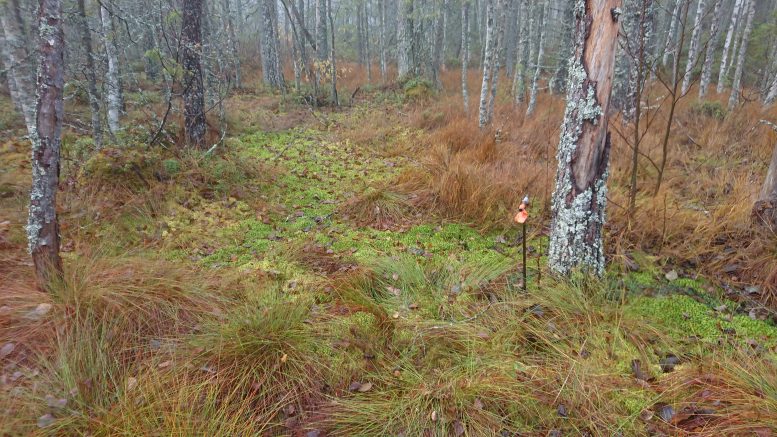New Discovery: Northern Peatlands Are Continuously Expanding, Defying Assumptions

Sphagnum mosses are expanding over mineral soil forest in Salamajärvi national park, as per an image by Teemu Juselius-Rajamäki.
Recent research from the University of Helsinki has shown an expansion in the size of northern peatlands over recent centuries. This newer discovery challenges the older belief that peatland growth in Fennoscandia had halted or reduced considerably, under the assumption that all flat areas good for peat growth had already been converted to peatlands.
The study's objective was to explore how peatlands are expanding and the implications this has for carbon sinks and natural landscapes. Alongside this, researchers also analysed the impacts of forest fires, local conditions like topography, and the constitution of the subsoil on peatland growth.
"Our research challenges the previously held belief that peatland lateral expansion has stopped or has decelerated in Fennoscandia; as our findings indicate that, on the contrary, this expansion has increased over the last 1,500 years," Doctoral Researcher Teemu Juselius-Rajamäki from the Faculty of Biological and Environmental Sciences stated.
He added that while the growth rate in the sandy, gravel, and till soils analysed is not high compared to flat clay soils, it translates into an average yearly peatlands expansion of about one centimetre.
As significant ecosystems for carbon sequestration and storage, peatland growth can considerably increase future carbon bound to peat. However, if the new peatlands dominated by sedges are very wet, initial methane emissions could be quite high.
The research raises questions about how peatland and forest boundaries develop. The study found peatland ecosystems to be naturally expansive, vital for setting conservation area boundaries and preparing restoration plans. Further, it paves the way for understanding the role of new peatlands in future carbon sequestration and methane emissions.
Given the rising interest in peatland-stored carbon, this issue becomes especially important. Despite being a large carbon store, peatlands have been relatively under-discussed in the carbon debate compared with forests.
"There is storage capacity of almost 900 billion tonnes of carbon in northern peatlands as per estimations. This study not only enhances our understanding of the peatland environment, but also provides substantive data to facilitate future decision-making," says Professor of Environmental Change, Atte Korhola, who led the study.
Peat samples dated with radiocarbon dating formed the basis of this study. Although an expensive process limiting the number of samples, the growing research data leads to a better understanding of peatland development.
Knowledge pertaining to the expansion of northern peatlands, as per this study, becomes significant in terms of peatland ecology and climate change prevention. This research offers valuable insight on the significant yet overlooked margins of peatlands.




